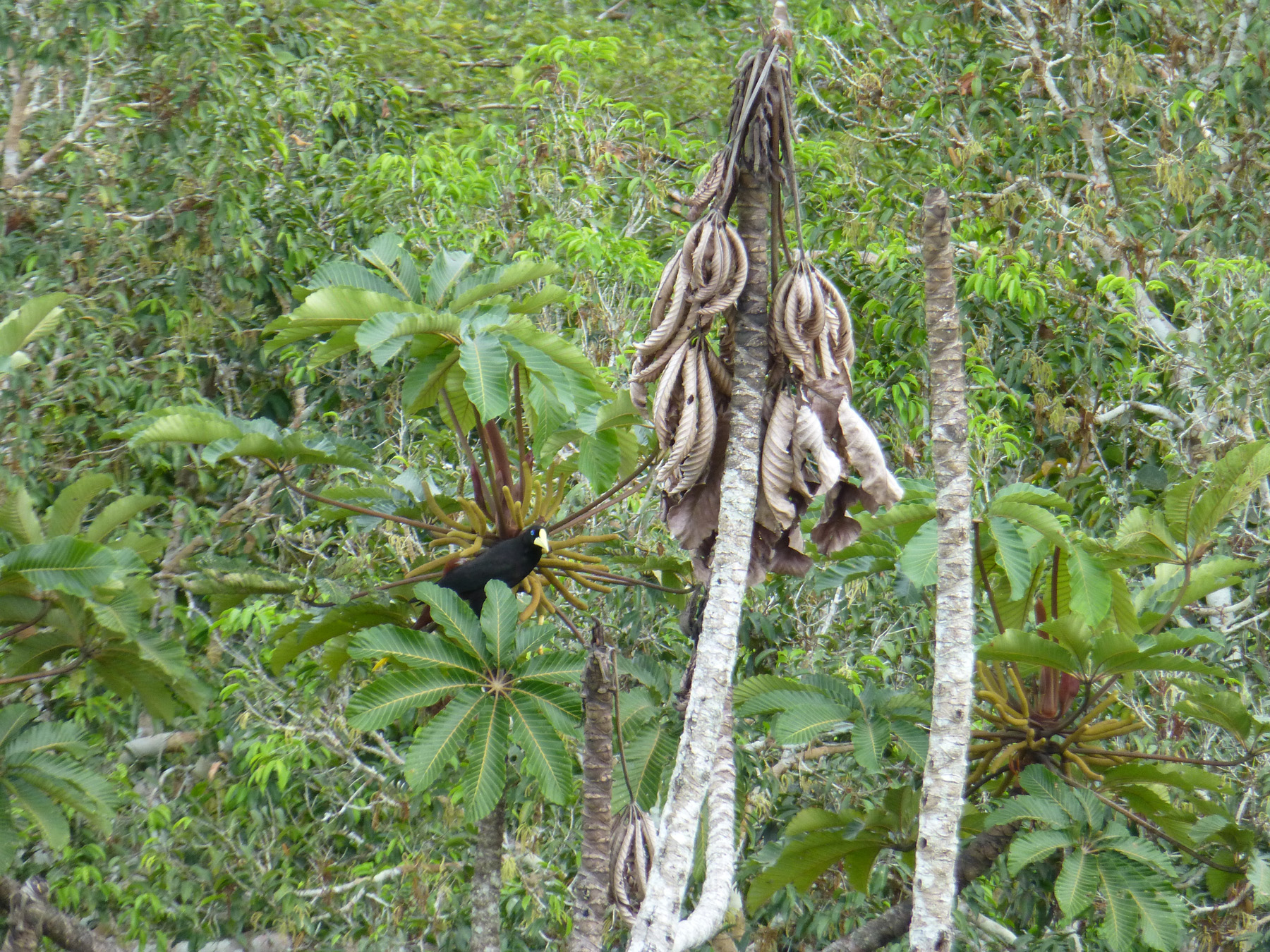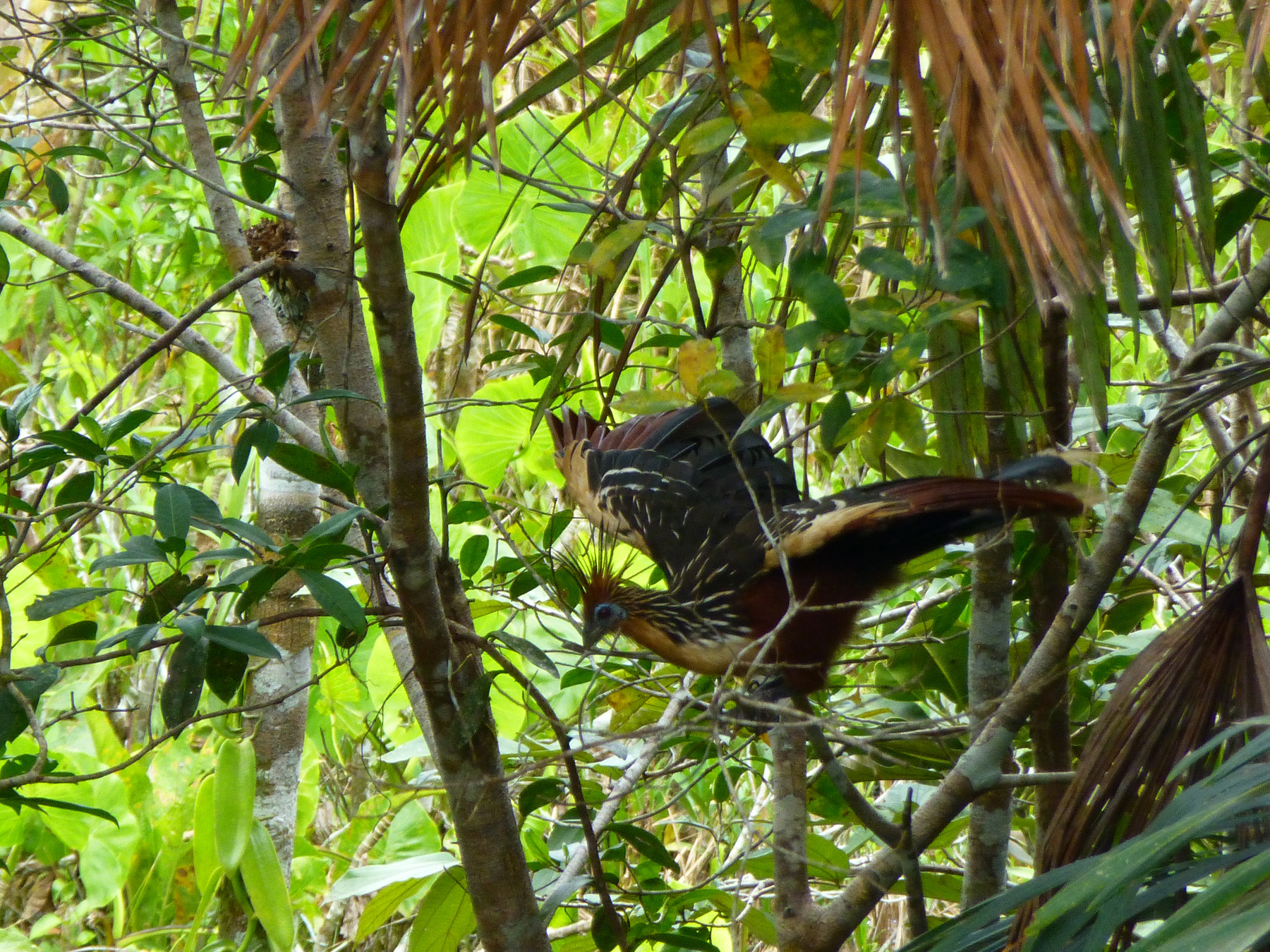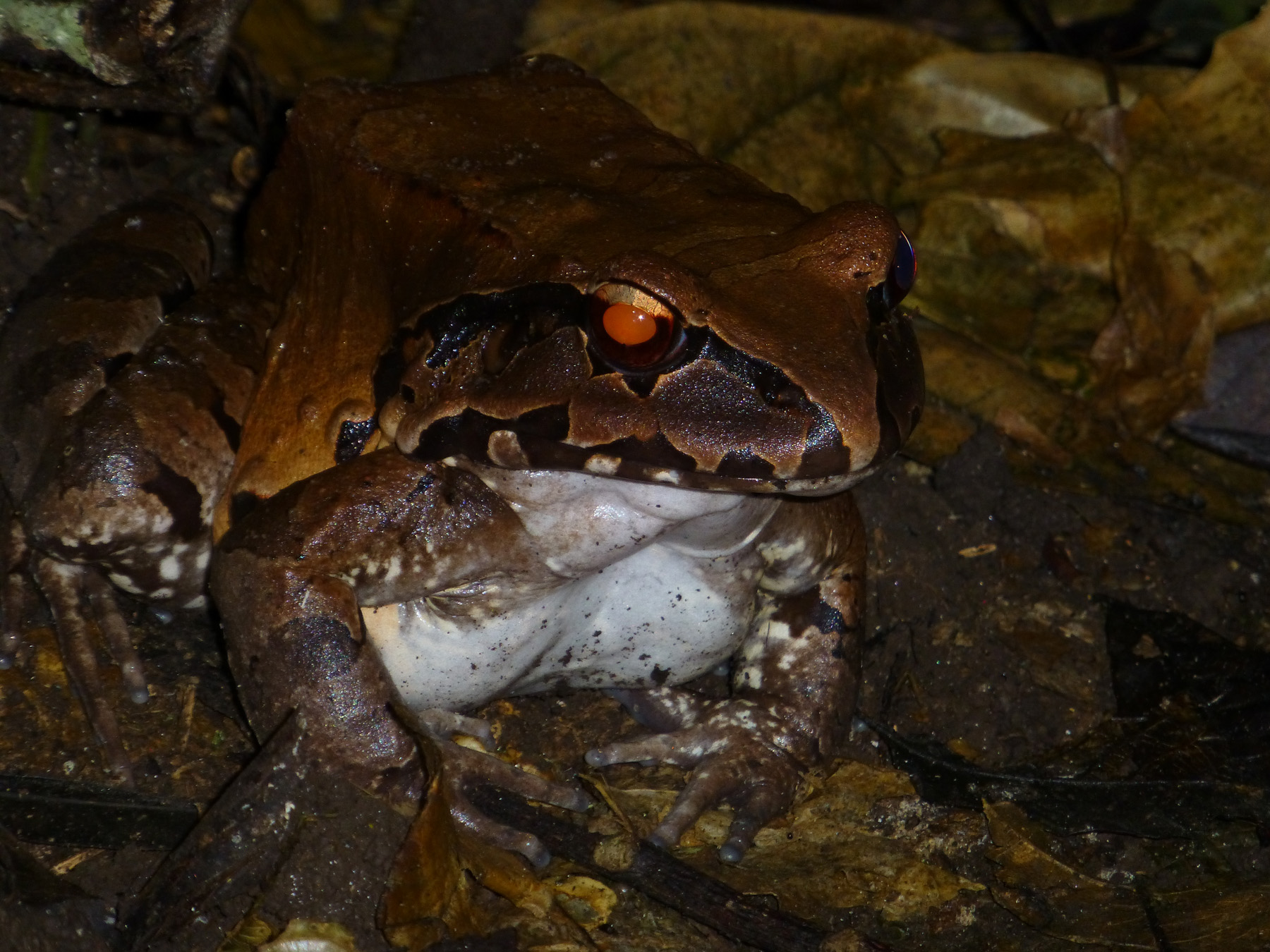Sept 14, 2013 - Sacha Lodge, Ecuadorian Amazon Rainforest
We awoke at 5:00 AM for breakfast at 5:30. Upon waking, Katie and I put on our standard jungle armor: rubber boots, long pants, long sleeve shirts, a hat, and copious amounts of sunblock and bug repellent. Precaution is a healthy person’s best friend!
Once we broke our fast, we hiked to the canopy walkway for some bird watching. This walkway was one of the main reasons we chose Sacha Lodge. Apparently there aren’t that many in existence in the rainforest, but the animal watching benefits are considerable. When you stand above the tree line you’re eye-level with exotic birds that you’d never see from the forest floor. The walkway was 130+ feet above the ground. It was comprised of three towers with two bridges connecting them.
Walking across in the clear morning air was invigorating and gorgeous. Right away Daniel spotted a white-throated toucan. It was a classic toucan, the kind that Toucan Sam is based on, for all you Fruit Loop lovers out there. Daniel set up a telescope, which allowed for some wonderful close-up viewing. Well over a dozen birds were spotted from the viewing platform: three types of toucans, a yellow-headed vulture, oropendolas, caciques, aracaris, fly catchers, and the jungle version of a turkey – a chachalaca! (Love that name). Most birds were at a distance, but we could see them shooting through the trees like arrows and hear them calling out in their own unique voices.
Joining us was our naturalist guide, Daniel, and our native Quechua guide, Pablo. Pablo had eyes like a hawk. He spied birds a mile away, able to identify tiny specks amongst tree limbs with his naked eyes. He found my favorite bird of the morning, a Great Potoo. I still can’t understand how he was able to spot it because, like an owl, it’s a nocturnal bird and was sleeping, so there was no movement to catch his eye. Plus, its camouflage was impeccable. It blended with the tree bark seamlessly, allowing it to sleep undetected in the wide open. How on earth did he find it?? I don’t know, but I was grateful he was up there with us.
The highlight of the morning, though, was the squirrel monkey. Pablo saw it on a nearby tree searching for food. Luckily, we could see it clearly scampering about on a naked limb. Typically squirrel monkeys travel in groups, but this one seemed to be foraging alone. It had a white underside and light brown fur on top with dark brown circles around its eyes. It was fearless, leaping into trees several feet away and dangling from the branches. No big deal, just another day in the life a spider monkey. Katie then spotted a band of small titi monkeys who were passing through the forest like a herd of cattle. They were many but, unfortunately, they were difficult to see through the leaves and vines. Consequently, they appeared more like shadows than monkeys.
After three hours of nature viewing, we walked down the last tower and into the rainforest. Before heading back to our rooms we made a quick stop to view some vampire bats. They were hanging upside down, trying to get a good-day’s sleep before venturing out for a night of blood sucking. I’m sure they didn’t mind us butting in on their nap time.
During our free time, Katie and I were strolling along the wooden walkway heading to the lodge when Katie detected movement in the trees. A band of small monkeys came jumping through the foliage right beside us. They were black mantled tamarins! One of them scurried down a tree trunk next to us, ate some berries, and screamed in our general direction. I called to it, trying to coax it closer, but it didn’t care one bit about me. Its only desire was food. After a few moments, off it went, swinging with its brothers and sisters around Sacha Lodge. We couldn’t believe our luck! We already felt blessed at having seen a monkey from afar, but to see one up close? It doesn’t get better than that.
That afternoon we hiked through the jungle with Daniel and Pablo. Pablo speaks Quechua and Spanish, and Daniel speaks Spanish and English. With their skills combined, they were able to teach us more about the rainforest than I ever thought possible.
We learned about primary and secondary rainforest. Primary forest has a high tree canopy that blocks sunlight, allowing only small plants to grow below. You can travel easily through this kind of forest, unlike secondary forest, which occurs when a large tree falls and allows a lot of sunlight through. Thus begins a fight to the top, with all the plants surging upward rapidly. This creates thick foliage that is virtually impenetrable. Not until the battle is won does the canopy form above and the plants recede below. Secondary forest happens quite often because of the shallow root system of the rainforest. I was surprised to learn that the seemingly fertile ground only goes a few meters down before hitting clay. Because of this, many trees have developed inventive ways to stabilize themselves. One has tons of roots fanning out above the ground, allowing the tree to rest on them like stilts. Another, the Kapok Tree, is the tallest in the Amazon. Its buttress roots stretch out to either side, creating a wide base like a wall. These roots are so broad and dense that native people use them for communication. Pablo demonstrated this by pounding a log against the side of a large buttress root. It caused a loud, deep reverberation in the ground that can be heard from miles away. An effective way of letting a nearly tribe know of impending danger.
Pablo also explained the medicinal values of different vegetation as we walked through the forest. Local people use various plants to cook with, heal wounds, cure illness, and even prevent pregnancy. Along the way he snatched bugs off of trees and searched for animal specimens for us to view. He was truly amazing! From large iridescent beetles to yellow horned spiders, I felt like we were seeing all the hidden diamonds of the jungle. He even found tiny hummingbirds sitting as still as statues in the foliage. How did he do it?? That man has skills.
One of Pablo’s many skills, it seemed, was being a jokester. At one point he ran ahead, and when we caught up to him he’d made a pair of “glasses” out of a long green stem. He started laughing and put them on my face, laughing even more! Later he made an umbrella-like hat and placed it on all of the women’s heads. We spun around like models, showcasing his spontaneous crafting abilities. This 61 year-old Quechua man had a little kid inside of him. It was fun exploring the rainforest with him.
A couple hours in, we reached a small wooden dock and loaded into a canoe. Once again we were on the Anaconda creek, but this time we took the long way through. The sun was setting as we passed under hanging vines and into open water. When we arrived at Sacha Lodge it was aglow with warm light and looked incredibly inviting.
At dinner we enjoyed good conversation with our other tour guests. One couple was from Japan and barely spoke English, so speaking with them was difficult, but we determined they were on their honeymoon. The other couple was from France but lived and worked in the Netherlands. Their names were Guillaume and Mathilde, and they were very friendly and fun to chat with. They had great advice about Quito and had just finished visiting the Galapagos Islands, which they said were out of this world. Other people on their boat got amazing last minute deals, which got Katie and I thinking about the possibilities… Maybe we could change our plans if the price was right?
That night we did our second evening excursion. This time we entered the jungle with nothing but our flashlights. Pablo led us through the forest looking left and right, up and down, under leaves, into bushes, and on the ground. Right away he found a giant toad, which was the size of a large softball. A moment later the Japanese gentleman spotted a rarer sight: a rainbow boa. Daniel said he had yet to see one in the 3+ months he’d been at Sacha Lodge. He was just as excited as we were! The boa’s coloring was orange and black, but its rainbow moniker comes from the prism effect that occurs when you shine light upon its scales. It was a beautiful snake, and it slithered next to us in the undergrowth before curling up in a coil.
As we traveled along we were treated to the sight of numerous amphibians. One frog, called a crystal frog, was resting on a leaf alongside the trail. Its name comes from the transparent skin on its underbelly. We could see its inner organs pumping while we examined its vivid coloring. Later, I came across a tree frog that was literally the size of a pencil eraser! In addition to amphibian life, some reptiles came out to play. An iguanid, which is a close relative to the iguana, was perched on a branch in silent splendor. The colors on its rigid scales were incredibly vibrant. You may be thinking that our night seemed filled with adorable critters, but you’d be wrong. I was saving the creepy stuff for last…
When I saw our first tarantula my skin turned cold. It was on the outside of the butterfly house, at the top of the burlap wall. Covered in hair, legs stretched outward, it was literally the size of a large hand! A few paces more and we saw another, and then another, and another. Apparently, they like to live in the pipes that support the walls of the Mariposario. Once we returned to the walkway, Pablo pointed out another one on the ground. They were everywhere, and they were huge!! I was actually really excited. I’d wanted to see real-life tarantulas in the wild, and my wish had come true!
Our nighttime adventure instantly changed my perspective on the Amazon rainforest. With every step I peered harder and harder into the surrounding bush, because I knew that with each new leaf or branch an amazing creature could be found. Everything around us was alive! It made me realize that during all these walks through the jungle I was inches away from these nocturnal critters, but with Daniel and Pablo nearby I always felt safe, and I knew I was getting the most out of every moment.

































